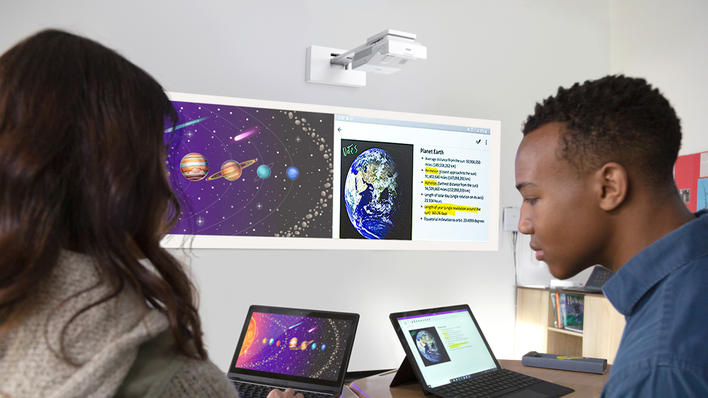Let’s face it: the education sector — especially K-12 public school systems — isn’t usually the earliest adopter of new technology. Despite the fact that schools are equipping our children for the future, they don’t always move the fastest to get there. For that reason, digital-transformation trends in education typically move a bit more slowly than in some other industries. Still, that doesn’t mean they aren’t happening.
Last year we took a look at the top digital transformation trends in several industries, including education, and this year we’re revisiting those industries to see how much they’re expected to change in 2019. My top picks for digital transformation trends in education this coming year are below.
Augmented reality / virtual reality
While I don’t know of any schools taking weeklong virtual field trips to Egypt just yet, I do think we’ll start to see some growing interest in using AR and VR to help students “experience” things like history, travel, and even STEM program development in the coming year. Products like Google Expeditions are aiming to make classroom AR more attainable, with a wide range of experiences available via simple phone apps. Indeed, Expeditions already offers some 900 different expeditions, including visits to the Louvre and Mt. Everest. These are the types of things that can keep our students engaged and excited about learning into the future. I anticipate we’ll be seeing a lot more interest in AR/VR learning apps — free or affordable — in the coming year.
Personalized learning
I have a friend whose two sons are both dyslexic. She found out after years of frustration — trying to understand why their cognitive abilities were so high and their grades were so low. One of the cool things about technology today is that it allows for more-personal learning experiences to help kids who have dyslexia or other conditions that cause them to learn differently. For instance, tech like Dragon Speak helps dyslexic students “write” their papers by voice, ensuring that their answers are not limited by their ability to spell or write. In addition, they’re able to learn via audio books, rather than moving slowly through text ones. Considering nearly 20 percent of the population suffers from dyslexia, this is huge. In terms of digital transformation trends in education, this could be a game-changer for kids needing personalized learning moving forward.
Internet of Things
We didn’t mention this last year, but I think it’s time to bring IoT into the discussion of digital transformation trends in education. In the past, a lot of educators have focused on things like energy efficiencies throughout schools and campuses when talking about the IoT. Those are great benefits, but I think there are far better ones. For instance, the IoT can allow a student’s teacher to share his or her test results with other teachers and parents in real time, alerting them to potential issues they may wish to face in their own classroom or at home. It can automatically track when homework has been completed — what time it’s being completed — and even collect data about how long it takes the student to finish the assignment. With that information, teachers can gain a better understanding of whether their methods are working, whether assignments may be too cumbersome, or if students seem to be working too late into the night. This is valuable information that could make future digital transformation trends in education even greater! And it could help bring peace to homework time in students’ homes, just as it brings greater insights to the classroom. (P.S.: All of the parents who struggle with logging their child’s reading, JiJi, and flashcards every night will also be grateful.)
AI and big data
This goes with the IoT above, but I just want to be clear: there is a huge opportunity in education today to move away from standardized testing data into less-structured data that helps us truly understand our students. No, we won’t be able to ditch standardized testing in 2019. But I do think many educators will start to see that other data they collect for their individual classrooms may be able to tell them far more than state testing ever could.
Security
Most of the schools in my area are putting up huge gates to keep students safe from the threat of gun violence. The same thing needs to be done on the digital level in terms of security. The more common tech access becomes, the more we need to focus on keeping students safe from cyber dangers. Just as the use of digital technology continues to increase, so does the need for high security, especially in the K-12 arena. I already receive a Securly report of my child’s search history every week. At the very least this coming year, we will be seeing a stronger focus on role-based access and endpoint security. And with the help of AI and machine learning, I think blocking the many potential threats will be far easier.
There are so many digital transformation trends in education that are taking off in pockets throughout the country. Clearly, there will be differences in the type of technology being used in wealthier public school districts and private schools, on the one hand, and disadvantaged ones on the other. However, the changes we’re going to see in 2019 will pave a way for making many of these advancements more universally acceptable. And that, to me, is something to get very excited about.
This article was written by Daniel Newman from Forbes and was legally licensed through the NewsCred publisher network. Please direct all licensing questions to legal@newscred.com.
![]()



